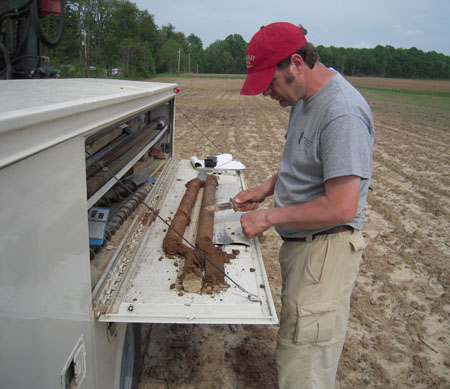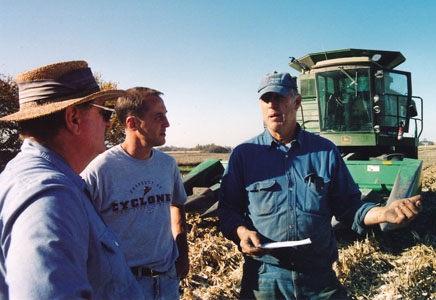About this project
 |
 |
 |
Analysis and Modeling |
The Issue
The US produces 41 percent of the world’s corn; of which more than 60 percent is grown in the upper Midwest known as the Corn Belt. An increasingly variable climate and increases in frequency and intensity of rainfall in the Corn Belt threaten crop production and degradation of soil and water resources. The Third National Climate Assessment projects continuing climate disruptions to agriculture in this region over the next 25 years and calls for accelerated adaptation and mitigation efforts to address negative impacts of climate change.
Our Response
The USDA-NIFA Corn-based Cropping Systems Coordinated Agricultural Project (aka Sustainable Corn Project) was a five-year, 11-institution research partnership, aimed at determining how to best help corn and soybean farmers make their cropping systems more resilient to the impacts of climate change. In 2011, it received NIFA funding at $20 million. An additional $25 million in other grants and contracts were obtained to expand project research on social-economic factors, soybean production (the base rotation with corn), impact of practices on crop pests and disease, and water use efficiency in organic corn production.
Through its research, engagement of Corn Belt farmers, and publications, the project has provided farm management strategies, which farmers can put in place throughout the Corn Belt to make corn-based cropping systems more resilient to the current and predicted impacts of climate change.
Specifically, researchers studied the impacts of corn-soybean rotation, cereal rye cover crops within the corn-soybean rotation, extended and diverse crop rotations, organic corn cropping system, drainage water management, canopy nitrogen sensing, tillage management (no-till and conventional), and landscape position. Research data were collected over 5 years from 35 field research sites throughout the project area and integrated with climate science data. The management practices were evaluated by multi-disciplinary teams of project researchers. Published results included 119 findings and 59 recommendations. For example...
• Controlled drainage can reduce offsite nitrate loss to surface water from drained cropland; the systems do not reduce the nitrate concentration in tile drains, rather a reduction in nitrate loss is a result of reduced drain flow from the land
• Cereal rye cover crops are effective for reducing nitrate and sediment losses from a variety of cropland landscapes
• To reduce nitrous oxide emissions in a corn-soybean system, replacement of corn with another crop, such as soybean or wheat, can achieve a greater reduction than what can be achieved solely through improved crop management
• Farmers are generally confident in their capacity to adapt to adverse weather; highly confident farmer are less likely to have experienced negative impacts of extreme weather.
These and many other findings have been reported in 154 refereed journal articles, 212 extension publications and 995 presentations to farmers, farm advisers, K-12 educators and others, resulting in a total audience reach of ~89,824. A legacy of educational publications and videos for agricultural stakeholders and educators have been made available via land-grant university Extension online stores as free downloads. See http://store.extension.iastate.edu/Topic/Crops/Climate-and-Agriculture. Many can also be found at Midwest Regional Climate Centers and the National Council for Science and the Environment’s website for K-12 educators.
The team’s database and infrastructure are being extended as project investigators develop new research teams such as the 2015 USDA-NIFA funded project, Transforming Drainage, led by Purdue University. The team’s research database houses some of the most comprehensive systems-level data collected on Midwest agricultural systems and is being made public—post project—at the USDA National Agricultural Library.
More information about the project...
| Year 5 Continuation Proposal - Narrative Text Only |
| 2014 Top Ten Project Accomplishments |
| 2013 Top Ten Project Accomplishments |
| 2012 Top Ten Project Accomplishments |
| Two-page project summary |
| Presentation slides A presentation about how to cultivate and enhance team capacity to accomplish big science. Authors include this project's director, Lois Wright Morton, Iowa State University. These slides were originally presented in Cincinnati, Ohio, October 2012, at an international meeting of three science societies: American Society of Agronomy, Crop Science of American and Soil Science Society of America. |
| Project Narrative(May 2011) |


